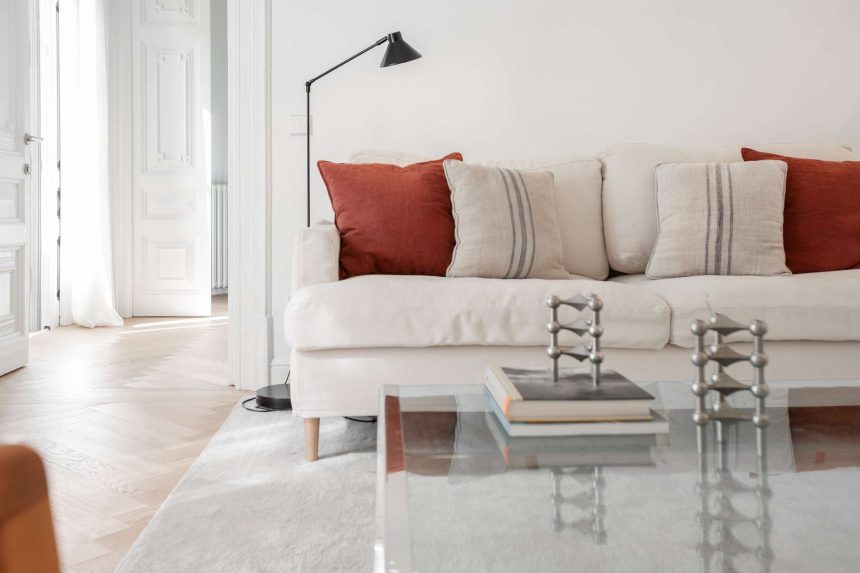Your living room is more than just a couch, of course, but it’s often the star of the show. This usually explains why a new paint color or a throw pillow upgrade doesn’t always fix a room that’s feeling dated. It often comes down to outdated couch styles, which command all the attention and put a damper on your beautiful living space.
We were intrigued by the silhouettes and styles of sofas that are responsible for aging your space. This led us to two interior designers who gave their expert opinions on what to avoid and what better couch styles exist for elevating your living room—and keeping it that way.
Bulky Recliners
slobo / Getty Images
It’s perfectly possible to strike a balance between style and comfort, and ultra-puffy and inflated cushions aren’t necessarily part of that. This means that the bulky couches of yesteryear don’t quite align with the modern look many people like today.
“Modern homeowners prefer recliners and sectional couches with slim profiles that still provide comfort,” says principal interior designer Artem Kropovinsky.
There are plenty of comfortable couches out that that are a better style fit for the living rooms of today. Think about the viral cloud couch and sleek modular couches.
Want more design inspiration? Sign up for our free daily newsletter for the latest decor ideas, designer tips, and more!
Chesterfield Sofas
LightFieldStudios / Getty Images
You can blame the smattering of tufted buttons, rolled arms, and rigid shape for making Chesterfield couches (and their imitators) feel outdated.
“Instead, it’s better to choose a modern sofa which will be soft and not so rough in design,” says principal interior designer Evelina Juzėnaitė. “And, of course, without buttons it is simple in shape.”
This makes your couch easier to implement in your space and it’ll better shift with the room around it as time goes on. Kropovinsky also recommends trying a more modern, curved sofa.
Brown and Beige Microfiber Sofas
Aleksandr Zubkov / Getty Images
Brown is having its moment in interiors (hello, Pantone Color of the Year), but it depends how you render it. Brown and beige microfiber couches feel fit for the 2000s, but their propensity to show wear and tear doesn’t make them a top choice for today.
“The fabric deteriorates unevenly,” Kropovinsky explains. “Bouclé, linen, and velvet fabrics replace microfiber to give rooms an upscale appeal with their long-term durable characteristics.”
Overly Ornate Couches
ninavartanava / Getty Images
Like the Chesterfield, Juzėnaitė explains that overly ornate sofas can present your living room with the same problem; they once pointed to luxury, but now look overwhelming and busy, leading to a stale-feeling space.
“Alternatively, you can choose other modern luxury sofas,” she suggests. “They’re more modern, more comfortable, and more beautiful. They also go well with modern interiors of this century.”
Identical Couch and Loveseat Sets
gerenme / Getty Images
Matchy-matchy furniture sets were once the norm, but they now could be the reason why your living room feels a little stuffy. There’s nothing wrong with color coordination, but there are other ways to pull a room together.
“Homeowners previously used these sets for unified look but now they appear too standardized and unexciting,” says Kropovinsky. “Combining various furniture items including an eye-catching sofa with special accent chairs generates a thoughtfully arranged and alive living area.”
Textured and Patterned Sofas
Andreas von Einsiedel / Getty Images
Who doesn’t love a statement? They can quickly produce an aesthetically-pleasing living room. However, it’s best to avoid bringing in the most maximal details through a couch.
“Choose a sofa of a singular color and without patterns,” advises Juzėnaitė. “Sofas in one color without textures and patterns is the best solution.”
Even if you love a pop of color, choose one jewel-toned or pastel shade for your couch, as opposed to several.






